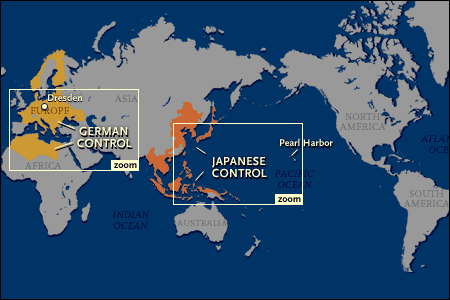

The fact that she did not sink after these impacts is a testament to the ship’s strength. The most notable test she took part in was the Bikini atomic bomb test in July of 1946 where atomic weapons were fired at her for practice. Instead, she was only repaired enough to be used for target practice. Pennsylvania was not kept as part of the post-war fleet. She was also awarded a Navy Unit Commendation which specified “For outstanding heroism in action against enemy Japanese forces” as the reason for the commendation.ĭue to the damage endured at Okinawa and the age of the ship, the U.S.S. She received stars for successfully executing operations at Pearl Harbor, the Aleutians Operation, the Gilbert Islands, the Marshall Islands, the Marianas Operation, the Western Caroline Islands, the Leyte Operation and the Luzon Operation. Pennsylvania earned eight battle stars for her efforts in WWII. Pennsylvania leads several other battleships in formation in January 1945. She was also the last major Navy ship to be hit by enemy fire during WWII. Although not meant as an insult, she was known as “old falling apart” amongst her crew because of her age and great use during the war. She returned to the Puget Sound Navy Yard in Washington State on October 24, 1945, having traveled nearly 150,000 total miles since Pearl Harbor. Here, the torpedo hole was patched by a large sheet of steel and she was sent back to the U.S. This was the most significant damage she endured throughout the war and the ship had to be towed by two tugboats to Apra Harbor, Guam. At Okinawa, she was hit by an aircraft torpedo, killing twenty men and injuring ten others. It was active in many naval campaigns including the North Pacific Campaign, the Gilberts and Marshalls, the Marianas Campaigns, the Carolines, the Philippines and Okinawa. Pennsylvania saw a great deal of action throughout the rest World War II. After the attack, she underwent another modernization which included adding new radar and many anti-aircraft guns.Īccording to the war history information on the battleship’s website, the U.S.S. Pennsylvania being in dry-dock during the attack is one of the main reasons it suffered so little damage. 1,177 of her crewman were killed on that day. This ship was hit by eight bombs and one torpedo, causing it to explode and sink. The same was not the case for her sister ship, the U.S.S. (“General Quarters” is the term used aboard a ship to tell the crew to man their battle stations.) That ship suffered minimal damage during the attack due to being hit by only one bomb. She was one of the first ships to open fire on the Japanese and it is said the 50 caliber crew began firing even before the General Quarters Alarm was sounded. On the morning of December 7, she was sitting in dry-dock in the navy yard. Pennsylvania was stationed at Pearl Harbor in 1941 during the infamous attack by the Japanese. Pennsylvania suffered little damage during the Japanese attack on Pearl Harbor her sister ship, the U.S.S. Two tripod masts replaced the cage masts that were previously on the ship and her combat systems were improved. Pennsylvania was stationed at the Philadelphia Navy Yard while she underwent modernization. In 1921, she became the flagship of the newly created battle fleet and led this fleet for the next eight years on patrols and maneuvers through the Atlantic, Caribbean and the Pacific. Because there were not enough oil tankers to send to the British Isles, the Allied Forces used only coal-burning ships to fight the German Navy, thus excluding the U.S.S. Pennsylvania was never used on the front lines because she was seen as “too modern.” She was one of two ships in the fleet that was oil-burning, the other being the U.S.S. Arizona, made in the New York Navy Yard in Brooklyn, NY.Īlthough she was ready for battle during WWI, the U.S.S. The other ship in the class was the famous U.S.S. This 31,400-ton battleship was built by the Newport News Shipbuilding and Dry Docking Company in Virginia, and was the lead ship in a class of two of this size.

Pennsylvania (BB 38) was authorized by Congress on Augand commissioned for service just shy of four years later on June 12, 1916. The event: the launching of the world’s largest battleship, the U.S.S. Trains from all over Pennsylvania, Maryland and Virginia arrived and flooded the town with spectators. Twenty thousand people gathered and cheered at the docks of the Newport News Shipbuilding Company on the morning of March 16, 1915. Pennsylvania sails out of Hampton Road, Virginia on December 10, 1916.


 0 kommentar(er)
0 kommentar(er)
